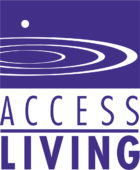Executive Summary
“We believe that Centers for Independent Living (CILs), like Access Living, should hold space for survivors of gun violence in very specific ways. As disability-led organizations responding to local needs, CILs have a responsibility to see all of a community’s needs — and living with a disability resulting from gun violence is an issue in every community.”
As the United States gun violence epidemic has widened, an enormous amount of energy has gone into gun violence prevention and supporting the family members of those killed by gun violence. However, support for survivors of gun violence has not received the same level of investment or attention, despite survivors outnumbering people who have been killed by non-suicide shootings, by nearly two to one over the last decade [1]. Those who become disabled through gun violence face a unique lack of supports related to adapting to their new lives as people with disabilities.
Access Living has both supported and employed disabled gun violence survivors since our earliest days in the 1980s. Access Living is a disability organization led by and for people with disabilities. That is why our work supporting survivors has typically centered on their status as disabled people with access and empowerment needs, not as survivors of the specific experience of gun violence. However, as Access Living expanded its understanding of disability movement work beyond disability rights to disability justice, it became obvious that focused insight was required to hear and meet the needs of our disability community members who have survived gun violence.
The national media stereotypes Chicago as a dangerous place full of guns and people willing to use them. But ask any Chicagoan: the frequency of gun violence, and surviving gun violence, is a complex dynamic informed by Chicago’s specific legacy of racism and community disinvestment. While some communities do see high levels of nonfatal shootings, these communities are not always the most marginalized in Chicago. The key thing to remember is that from 2018-2022, nonfatal shootings happened in 75 of Chicago’s 77 statistical Community Areas — all except Edison Park and the area containing O’Hare Airport (see Appendix C).
Chicago’s gun violence survivors are our families, neighbors and friends, many if not most of whom become disabled as a result. In 2023 alone, 2,390 people were shot, but not killed, in Chicago. However, from January 2010 through the end of 2023, the City of Chicago Violence Reduction Dashboard recorded a shocking 8,165 deaths by gun violence, and an even more shocking 37,109 nonfatal shootings [2].
However, at this point in time we cannot rely on official data alone to understand the lives of disabled gun violence survivors. Current datasets on nonfatal shootings do not share a common national definition, and they tend to be biased in terms of the collecting entity. A nonfatal shooting could be intentional, or not (of interest to law enforcement); it could significantly affect a person’s physical health, or not (of interest to hospitals) [3]. Thus, to examine the issue, Access Living relied on our strength: we talked to people with lived experience of becoming disabled by gun violence.
In this paper, we share our first-ever qualitative analysis of the experiences of disabled Chicago gun violence survivors. Every member of our team for this project identified as a person with a disability, and most were also people of color. Our goal was to learn directly about the experiences and needs of disabled survivors in Chicago, while also providing support through the engagement of peers. We focused our attention on the South and West Sides of Chicago, as these are the communities most affected by gun violence.
We designed our project in a way that enabled us to hear directly from those survivors. We knew that peer support demands the involvement of people with a very similar experience, so we engaged peer facilitators who themselves were gun violence survivors to help facilitate group discussions. In the groups, we talked with survivors to learn about their experiences, health care outcomes, and the service and support gaps they faced. As we listened to their stories, we considered how Access Living could help fill those gaps.
Throughout the project, we considered it a matter of integrity to not just conduct focus groups, but to commit to action by building an Access Living program that will address what people need. We believe that Centers for Independent Living (CILs), like Access Living, should hold space for survivors of gun violence in very specific ways. As disability-led organizations responding to local needs, CILs have a responsibility to see all of a community’s needs — and living with a disability resulting from gun violence is an issue in every community. After hearing from our focus groups and considering what we could do as an organization to support our fellow Chicagoans, we committed to the following core actions:
- Provide all the same CIL services we have always provided for people who are disabled, newly and otherwise, but add a program specifically tailored for gun violence survivors
- Form support groups led by a directly affected individual who has dealt with the same barriers, where participants can safely express their experiences or ask their peers questions
- Offer peer navigator services to assist with obtaining community support that people with disabilities require
In this report, we share what we learned in our listening sessions and interviews with survivors, as well as what we learned from our research and interviews with other service providers and advocates. We also share how that information can inform the role Access Living and other CILs play in creating a culturally competent, disability-inclusive, positive future for gun violence survivors.
[1] See the Gun Violence Archive at https://www.gunviolencearchive.org/. Accessed March 22, 2024.
[2] City of Chicago Violence Reduction Dashboard, Violence and Victimization Trends for 2023. See https://www.chicago.gov/city/en/sites/vrd/home.html. Accessed April 2024.
[3] Kroovand Hipple, Natalie. “Towards a National Definition and Database for Nonfatal Shooting Incidents,” J Urban Health. 2022 Jun; 99(3): 361-372. See https://www.ncbi.nlm.nih.gov/pmc/articles/PMC9187788/. Accessed April 2024.
